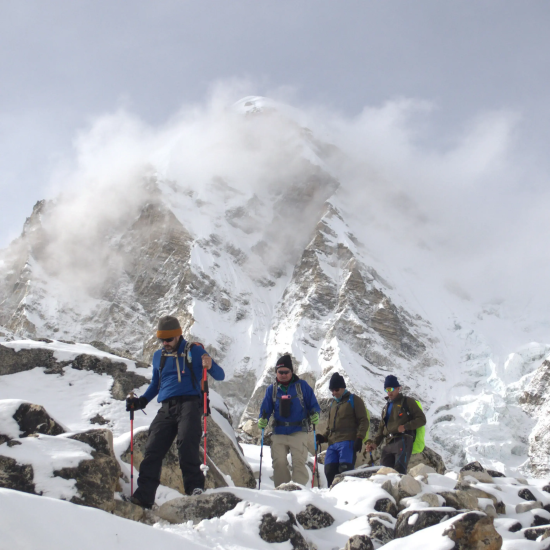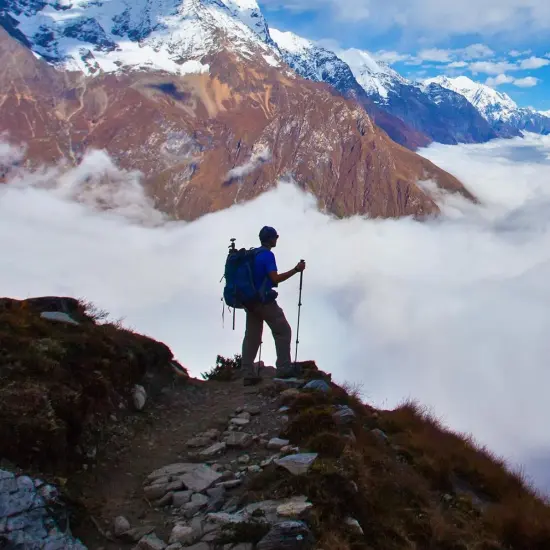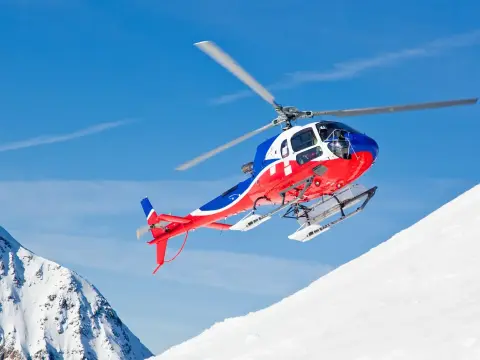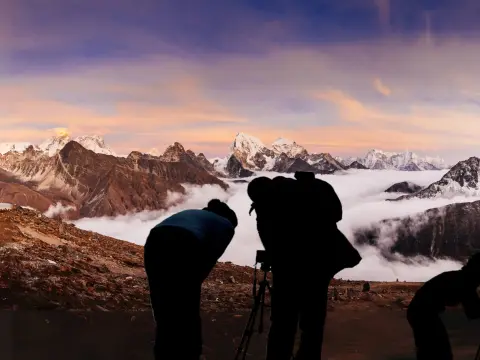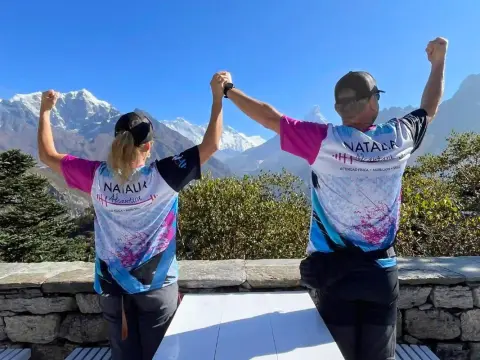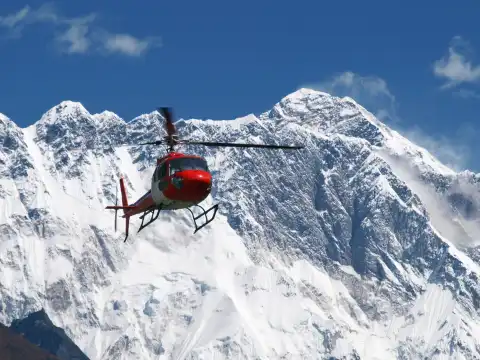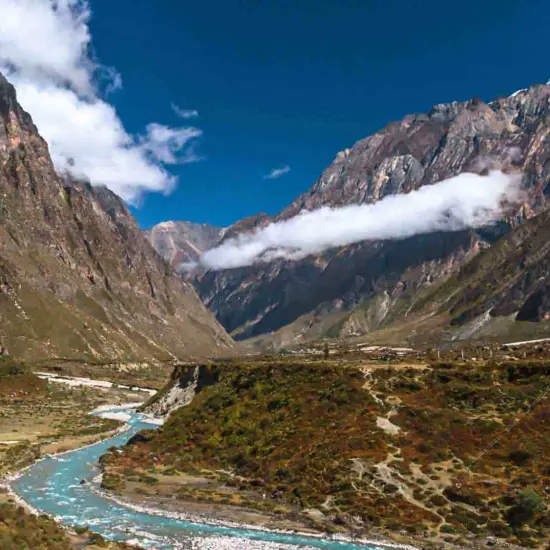The Budget Everest Base Camp Trek is a cost-effective adventure into the heart of the world’s highest mountains, designed for trekkers seeking the full Everest Base Camp experience without overspending. Over the course of 12 unforgettable days, this trek offers panoramic views of Mount Everest (8,848.86m) and other Himalayan giants, rich Sherpa culture, high-altitude adventure, and personal achievement—all while keeping costs low and flexibility high.
Ideal for budget-conscious travelers, this package allows you to choose your food and accommodation preferences independently or as part of an optional add-on. Whether you're a solo traveler, a group of friends, or a couple on an adventure, this trek is the perfect blend of affordability, culture, and high-altitude trekking.
Route and Altitude Description
The Budget Everest Base Camp Trek begins with a short but thrilling flight from Kathmandu (1,400m) or Manthali (474m) to Lukla (2,860m)—the gateway to the Everest region. From Lukla, the route follows the classic trail along the Dudh Koshi River, passing through traditional Sherpa villages such as Phakding, Namche Bazaar, Tengboche, Dingboche, and Lobuche before reaching the iconic Everest Base Camp (5,364m). The trek concludes with an early morning hike to Kala Patthar (5,545m), the highest point of the trek and one of the best viewpoints of Mount Everest.
The trail gradually ascends from green forests and deep river valleys to alpine landscapes, glaciers, and rocky terrains. Two critical acclimatization stops in Namche Bazaar (3,440m) and Dingboche (4,410m) are built into the itinerary to allow your body to adjust to the increasing altitude, reducing the risk of altitude sickness and ensuring a safer trek.
Everest Base Camp Trek Distance, Duration & Altitude Facts
The total round-trip trekking distance of the Everest Base Camp trail is approximately 130 kilometers (81 miles). This distance is covered in about 9 trekking days, excluding the arrival, departure, and rest days. Each day involves 5 to 7 hours of walking, depending on the altitude, terrain, and weather conditions.
The maximum elevation reached is Kala Patthar at 5,545 meters (18,192 feet), which offers breathtaking sunrise views over Everest, Lhotse, Nuptse, and surrounding peaks. The highest sleeping point on the trek is Gorak Shep (5,164 meters or 16,942 feet), the last settlement before reaching Everest Base Camp.
Two crucial acclimatization points are integrated into the journey:
- Namche Bazaar (3,440m) – a vibrant Sherpa town with cafes, museums, and bakeries.
- Dingboche (4,410m) – a windswept valley village surrounded by dramatic mountains.
These rest days are essential for adjusting to the high altitude and preventing Acute Mountain Sickness (AMS), which can be serious if not properly managed.
Permits & Entry Requirements
Trekking to Everest Base Camp requires several permits, which are mandatory for both security and conservation purposes. The following permits are included in your package:
- Sagarmatha National Park Entry Permit – Protects the natural environment of the Everest region.
- Khumbu Pasang Lhamu Rural Municipality Permit – A local government tax that supports village infrastructure and tourism management.
- TIMS Card (Trekkers' Information Management System) – Helps track and assist trekkers for safety purposes.
We will arrange all necessary permits for you. Please bring two printed passport-size photos and a passport copy to process these documents before your trek begins.
What You Can Expect on the Budget Everest Base Camp Trek
Expect a true Himalayan adventure filled with natural beauty, cultural richness, and physical challenge. The trail is dotted with Buddhist stupas, fluttering prayer flags, and welcoming teahouses. You’ll meet friendly Sherpa locals, enjoy hearty mountain meals, and walk among towering peaks like Ama Dablam, Thamserku, Lhotse, Nuptse, and of course, Mount Everest.
You’ll visit ancient monasteries like the famous Tengboche Monastery, cross iconic suspension bridges over glacier-fed rivers, and camp beneath the towering walls of the Himalayas at Everest Base Camp. At Kala Patthar, you’ll experience one of the most beautiful sunrises on Earth, with golden light striking the peak of Mount Everest.
The trek is moderate in difficulty and does not require technical climbing, but good physical fitness and mental determination are essential. Our expert guides ensure your safety, provide high-altitude knowledge, and support you every step of the way.
Why Book the Budget Everest Base Camp Trek with Places Nepal?
Choosing Places Nepal for your Budget Everest Base Camp Trek ensures that you get top-quality service at a fair price. Here’s what makes us the right choice:
- Affordable Trekking Package – Keep costs low with flexible food and accommodation options.
- Expert Local Guides – Licensed, experienced, and trained in high-altitude safety and first aid.
- Personalized Support – From pre-trek briefings to 24/7 in-country support.
- Small Group Departures – Get a personalized experience with like-minded adventurers.
- Porter Service Available – Lighten your load with our affordable porter add-on service ($25/day).
- No Hidden Costs – Transparent pricing, with permits, flights, and airport transfers included.
- Achievement Certificate & Trek Map – Commemorate your adventure with a customized keepsake.
Whether you're trekking solo or joining a group, we offer professional guidance and unbeatable value every step of the way.
Note: This package is designed to be budget-friendly by default. However, if you’d like to include your meals and accommodations, please refer to our Optional Add-Ons section for flexible upgrades.
Ready to embark on the journey of a lifetime?
Contact us today to join a group departure or book a custom private trek to Everest Base Camp.
















































